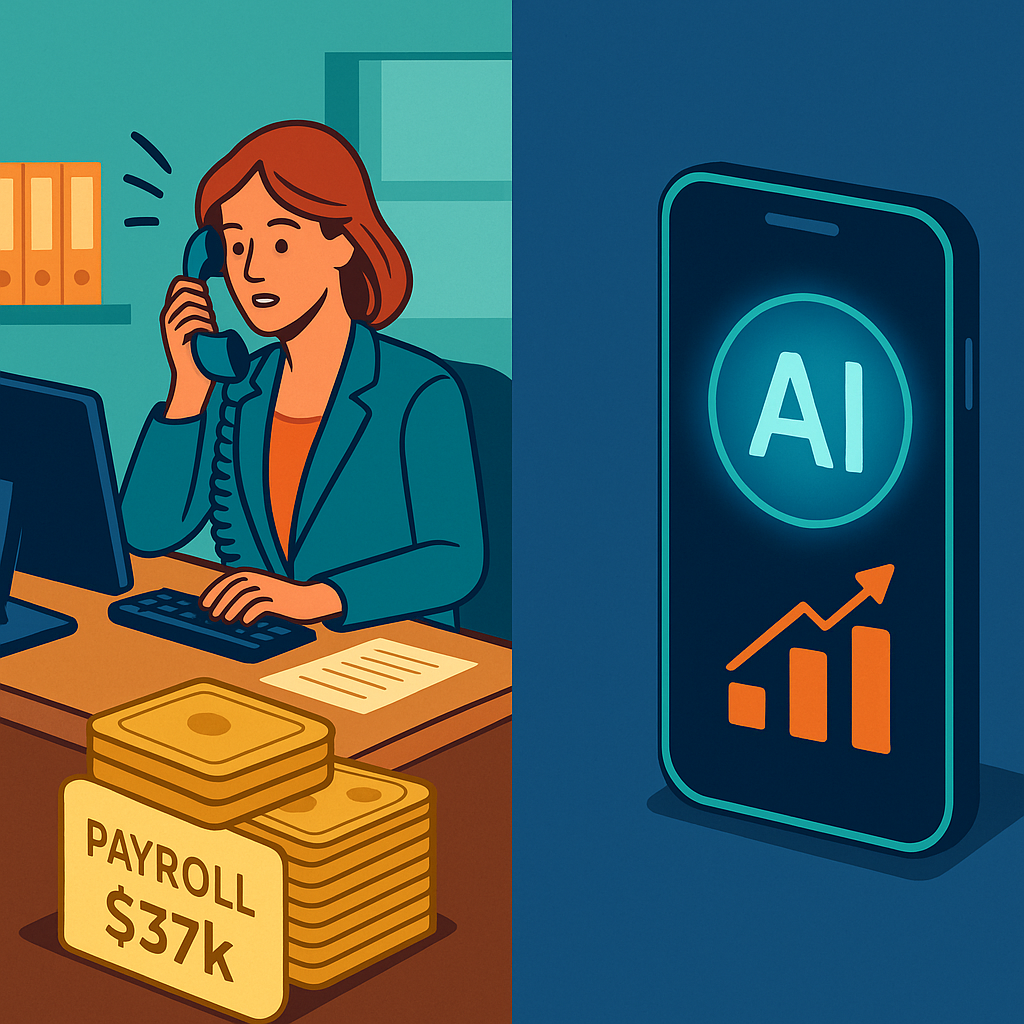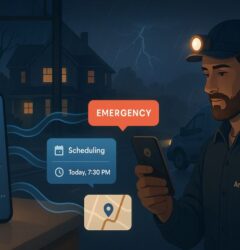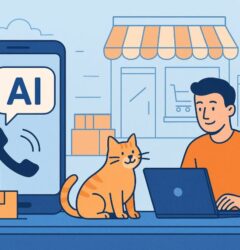
The Reception Problem Most Small Businesses Still Face
Customers don’t stop calling when your lone receptionist clocks out, or when you’re elbow‑deep in work and can’t reach the handset. Yet the median U.S. receptionist now earns about $30,450 a year, plus payroll taxes and benefits, making full‑day coverage a luxury for many firms. For owners who try to answer all calls themselves, every ring interrupts their main work and stretches the day past dinner. Could an AI answering service for small business be the solution?
What Exactly Is a Small Business AI Answering Service?
Think of an ai answering service for a small business as a voice‑first, always‑on receptionist trained on your own FAQs and workflows. Calls forward to a cloud number where conversational AI greets the caller, understands intent, answers routine questions, books appointments, or escalates urgent issues to you. Because the system runs on enterprise AI speech models, callers hear natural language, not IVR menus that sounds like a robot. Some providers even introduce live agents as an overflow or edge‑case call layer, merging AI speed and human sensitivity as required.
Real‑World Cost Comparison: Payroll vs. Subscription
Crunch the numbers for an AI Receptionist. An entry‑level receptionist working for $17–18 an hour will run you around $3,100 (latest Bureau of Labor Statistics data) a month once you factor in payroll tax, healthcare contribution, and paid time off. Basic AI reception packages start under $75 a month for low‑volume practices and only go up as minutes go up. The breakeven is dramatic: a year of AI service can be less than one month of human salary. In professional services such as law, dentistry, and HVAC, owners who redirect saved payroll toward marketing or equipment upgrades often see positive ROI in the first quarter.

Missed Calls Equal Lost Revenue – Here’s the Data
Even if you’ve hired a part‑time receptionist, gaps remain. One recent survey found that small businesses miss nearly 22 percent of incoming calls.
Another study of 142 firms pegged the figure at 47 percent during standard business hours.
Every ring that is not answered pushes prospects to the subsequent Google listing. Because AI receptionists answer on the very first ring 24/7, they bridge that revenue gap headcount-free.
24/7 Coverage and Effortless Scalability
Human staff can handle one call at a time and need lunch breaks, sick days, and overtime pay after 40 hours.
AI handles dozens of calls at once, any time of day or night. When volume spikes from a sudden heatwave for an HVAC company, the system simply spins up more cloud capacity. Hybrid platforms fall back to live agents if the AI encounters an unfamiliar request, so callers never get left behind. Small teams suddenly deliver enterprise‑level availability without burning out or inflating payroll.
Modern services are low‑friction. You port over your existing business number, copy your minimal knowledge base (hours, price cues, service areas, faqs), and choose escalation rules. There is no hardware or coding required. Many ai answering services offer go‑live times in minutes, not days.
Most platforms email post‑call transcripts to your email or CRM, making a searchable record of every interaction without note‑taking.
When to Combine AI With Human Support
AI is great at predictable questions such as “Do you accept walk‑ins?” or “What’s the service call charge?” and after‑hours triage. If your business relies on in‑depth relationship building or upselling on initial calls (high‑end real estate, bespoke design), a hybrid tier may be the ticket: AI screens and schedules. You or a live receptionist take high‑value consults personally. The challenge is mapping which call types genuinely require human empathy and which require only accurate information and quick routing.
Case Snapshot: A Solo Dentist Doubles After‑Hours Bookings
Dr. Nguyen, a Dallas dentist, directed her office number to an AI receptionist after tiredly returning voicemails from patients in pain. In month one, the AI handled 312 after‑hours calls, booked 46 emergency appointments, and directed only seven clinically complex questions to the on‑call cell. Reviewing calendar data, she saw a 113 percent increase in urgent bookings and regained weekends spent checking voicemail. Annual subscription cost: $1,200. Estimated additional procedure revenue: $18,400. By using an ai answering service for dentists, she was able to grow.
How to Decide If an AI Receptionist Fits Your Small Business
Ask three questions:
- What percentage of calls revolve around predictable information or simple bookings?
- How many leads churn because no one can answer outside 9‑to‑5?
- Could saved payroll fund growth initiatives more critical than a full‑time front desk?
If your answers skew toward “many,” “too many,” and “absolutely,” an AI phone answering service is more than a tech experiment, it’s a competitive lever. Nearly any small business can use an ai answering service (plumbers, hvac, real estate, ecommerce, and more).
Looking Beyond Price in Choosing a Provider
While monthly price and included minutes appear the obvious metrics, examine more carefully how each platform trains and updates its language model.
Some providers utilize static scripts in which you have to manually tune each response, while others use continuous learning that refines responses after each call. Ask whether the system can ingest your website, knowledge‑base articles, or even recorded calls to accelerate training. The richer its learning pipeline, the less time you’ll spend fiddling with settings and the more natural your brand voice will sound when customers ring in.
Future‑Proofing Your Customer Experience Strategy
AI voice over IP is evolving fast: sentiment detection, multilingual switching mid‑call, and direct CRM write‑backs are already on many 2025 product roadmaps.
Choosing a vendor for AI answering service for small business with an open API and public integrations spares you lock‑in when new functionality comes out. It also enables you to add stacks of complementary capabilities such as AI‑driven outbound reminder calls or SMS follow‑ups onto the same platform without having to rebuild from scratch. In short, today’s AI answering service for a small business can evolve into tomorrow’s fully‑featured customer‑communication hub, if you lay flexible foundations today.
Key Takeaways and Next Steps
A single missed call can lose a sale and a year of missed calls can strangle growth.
With median receptionist salaries rising and consumer patience declining, small businesses need a reception solution that can keep up. AI phone answering services deliver enterprise‑grade availability, measurable ROI, and setup quick enough to be done before lunch. Forward your line for a weekend trial and compare Monday’s call logs. If the numbers echo the studies above, you’ll have your answer before the coffee’s gone.


